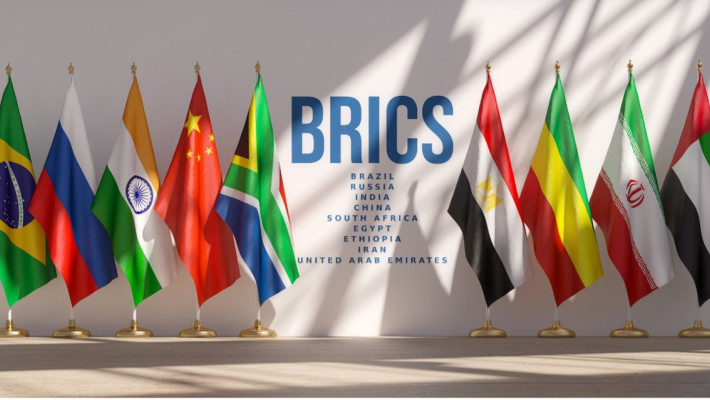Publications
Commentary on BRICS Economies
The Quest for Prosperity for BRICS Economies
Dr Bharti Chhibber and Dr Wing Lok Hung
Over 40 countries expressed their interest in joining the BRICS bloc family, and finally, it has been decided at the recently concluded Johannesburg Summit that six countries namely Argentina, Egypt, Ethiopia, Iran, Saudi Arabia and the United Arab Emirates will become full members in 2024. The BRICS economies certainly exhibit huge opportunities. However, there are still several challenges ahead. For example, Iran and Saudi Arabia just agreed to restore diplomatic relations and it takes some time for further cooperation. Besides, the implementation of exact practices and policies may require further deliberation. Every country has fundamental differences in its economy. BRICS countries have different levels of economic growth. China has maintained its long-term high economic growth trajectory in the past few decades, but the country is now facing strong economic headwinds, ranging from a worsening prospect in trade and an unstable property market. In particular, the China-US relationship has been increasingly complex and the global economy is expected to decline in the coming years.
According to the recent IMF economic forecast, Russia will be hampered by the departure of multinationals and the loss of human capital. Brazil and South Africa also face challenges in the infrastructure sector and furthering the reform process. As per IMF projections, global growth is projected to fall from an estimated 3.5 percent in 2022 to 3 percent in both 2023 and 2024, however, India’s growth forecast has been raised to 6.1 percent which is good for the BRICS as an organization. New members especially Saudi Arabia and the United Arab Emirates will also hopefully inject fresh impetus to establishing a new mechanism to consolidate economic integration.
Multilateralism is not a new concept but the BRICS expansion is significant for emerging markets and developing countries that would like to deepen interdependence without the leadership of Europe and the U.S. It also signals the structural problems of traditional organizations such as the WTO and IMF. For example, the Doha Round has not been beneficial to South Africa as the country gained very little or no additional market for its agricultural exports. In the future, we will likely see more developing countries pursue South-South Cooperation to achieve prosperity taking forward what started in the 1960s and 1970s as an alternative to the unequal international economic and political order. South-South cooperation flows from the Buenos Aires Plan of Action for Promoting and Implementing Technical Cooperation among Developing Countries adopted by 138 UN Member States in 1978.
BRICS expansion serves as an example for other international organizations like the United Nations to be more democratic and representative of the global countries. The BRICS Johannesburg Declaration calls for the transformation of the UN to facilitate the legitimate aspirations of emerging and developing countries by increasing the permanent membership of the Security Council with the inclusion of Brazil, India and South Africa.
Less reliance on the dollar for trade, and reforms in the United Nations Security Council saw a consensus approach among the original member states, though the issue of a BRICS currency was not discussed during the summit. Many member states including China, India and Russia are increasing trading in their local currencies but the idea of de-dollarization is not very realistic at the moment. As Shri Hardeep Singh Puri, Minister of Petroleum and Natural Gas and Minister of Housing and Urban Affairs, Government of India said there are “international arrangements, trading arrangements, payment arrangements, these have been in place for a long time”.
In the past decade, the world has experienced significant geopolitical and economic transformations. Early in 2012, the ministries of finance and the central banks of BRICS carried out a comprehensive study on synergies and complementarities among BRICS members. The study found that there were at least 13 areas that require further cooperation including intra-BRICS trade and investment cooperation, cooperation in infrastructure financing, transportation, financial market development, food security, technical education, research and development, energy security, and creating an international development bank for fostering South-South investment. BRICS can enhance cooperation among the member-states as suggested by India at the Johannesburg Summit through the building up of a BRICS Space Exploration Consortium, the creation of the International Big Cat Alliance to safeguard them and the creation of a depository of traditional medicine.
There is a possibility to extend the cooperation to the next level among the BRICS member-states. It is time for BRICS members to explore new areas of cooperation that could increase economic growth and development, both among BRICS countries and worldwide for a prosperous future.
Dr Bharti Chhibber is an expert on international relations and teaches foreign policy at the University of Delhi, India and Dr Wing Lok Hung teaches Greater China in the Global Political Economy at the Chinese University of Hong Kong

